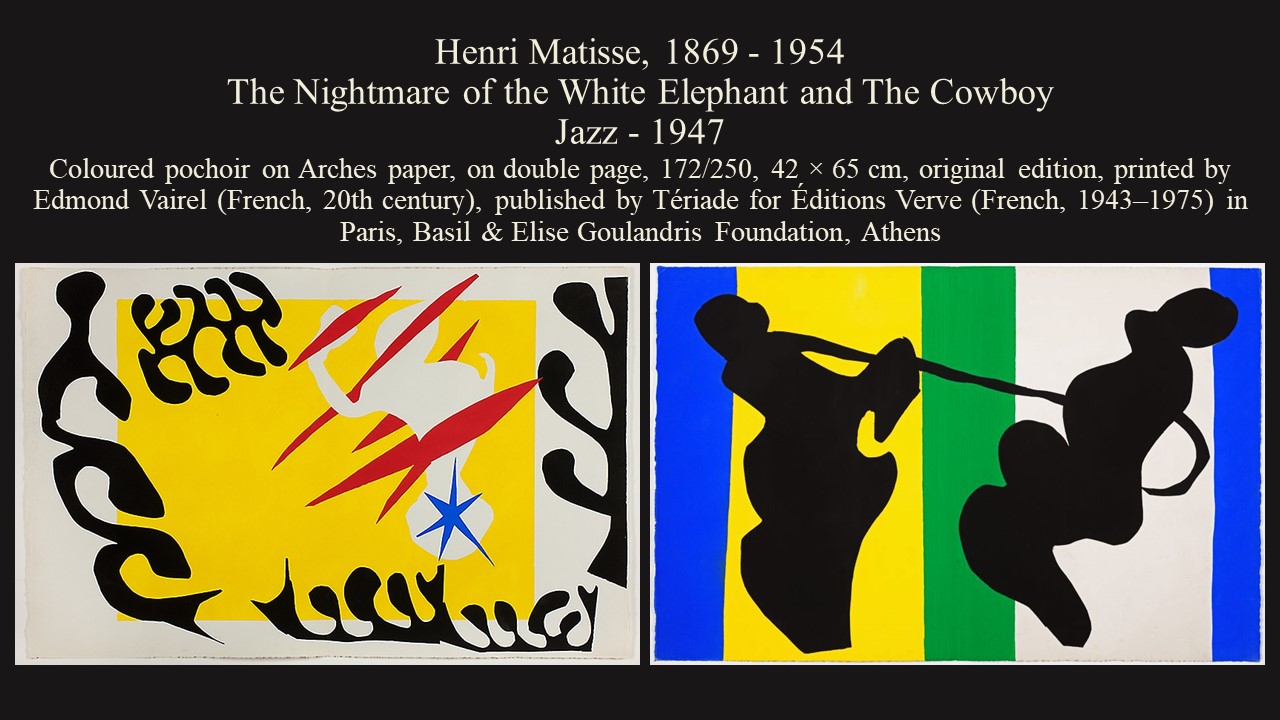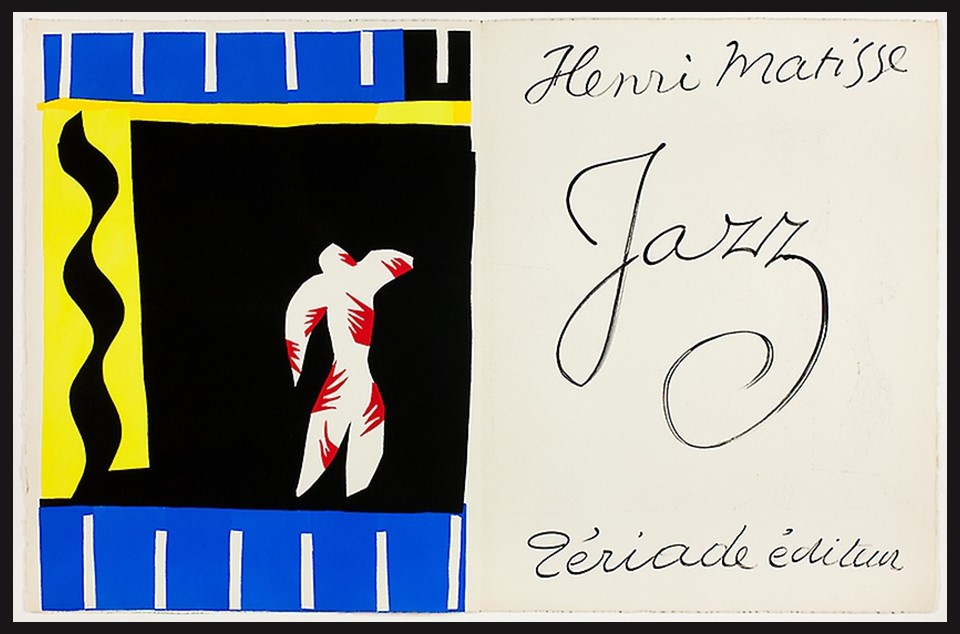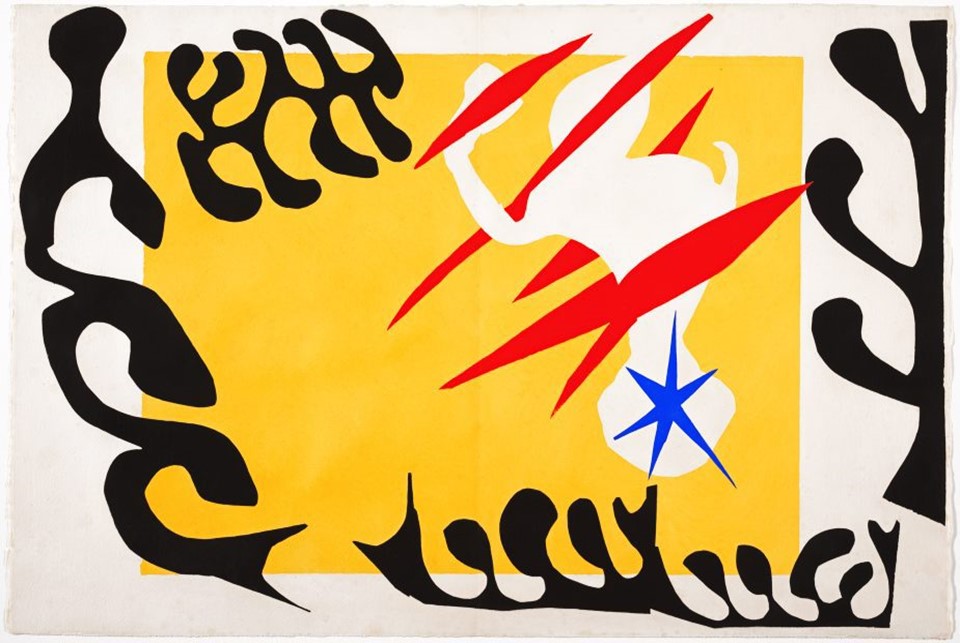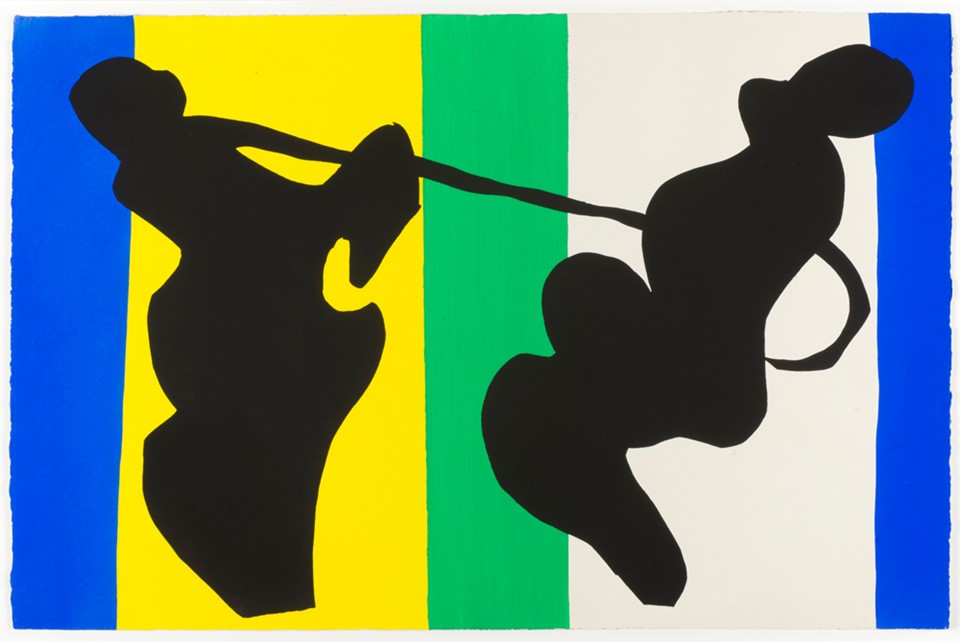
Henri Matisse once said… “Jazz is rhythm and meaning.” My students love to explore Matisse’s oeuvre and his Illustrated Book Jazz is a particular favourite. They like the brightly coloured pochoirs, his fluid lines and the energy every single illustration transmits. My new BLOG POST, Matisse and Jazz is inspired by two illustrations in Jazz, exhibited in Basil & Elise Goulandris Foundation in Athens. It is dedicated to my students…
What is Jazz?
According to the Smithsonian National Museum of American History … “Jazz is a kind of music in which improvisation is typically an important part. In most jazz performances, players play solos which they make up on the spot, which requires considerable skill. There is tremendous variety in jazz, but most jazz is very rhythmic, has a forward momentum called “swing,” and uses “bent” or “blue” notes… Jazz can express many different emotions, from pain to sheer joy… ” https://americanhistory.si.edu/smithsonian-jazz/education/what-jazz
What is the definition of Jazz?
“The origin of the word jazz has resulted in considerable research, and its history is well documented. It is believed to be related to jasm, a slang term dating back to 1860 meaning pep, energy, zest for accomplishment, drive, energy… The earliest written record of the word is in a 1912 article in the Los Angeles Times in which a minor league baseball pitcher described a pitch which he called a jazz ball because it wobbles and you simply can’t do anything with it”. https://en.wikipedia.org/wiki/Jazz and https://www.merriam-webster.com/dictionary/jasm

Is Matisse’s Illustrated Book Jazz doing justice to the word?
I believe it does…The book’s title might be musical, but the illustrations are “experimental, and improvisational in nature” …just like Jazz music. “The designs were initially intended as covers for Verve, a French art magazine published by Tériade. In 1947, Tériade issued the compositions in an artist’s portfolio. The book included 20 colour prints, each about 16 by 26 inches (41 by 66 cm), as well as Matisse’s handwritten notes expressing his thoughts throughout the process. Tériade gave it the title Jazz, which Matisse liked because it suggested a connection between art and musical improvisation. Despite the low number of books printed, Jazz was well received.” https://www.metmuseum.org/art/collection/search/353770 and https://www.artgallery.nsw.gov.au/collection/works/151.2014.4/ and https://en.wikipedia.org/wiki/Jazz_(Henri_Matisse)
In Athens, Greece, the Basil & Elise Goulandris Foundation exhibits two Matisse Pochoirs from Jazz… The Nightmare of the White Elephant, and The Cowboy.

The Nightmare of the White Elephant, Jazz, 1947, Coloured pochoir on Arches paper, on double-page, 172/250, 42 × 65 cm, original edition, printed by Edmond Vairel (French, 20th century), published by Tériade for Éditions Verve (French, 1943–1975) in Paris, Basil & Elise Goulandris Foundation, Athens
https://goulandris.gr/en/artwork/matisse-henri-the-nightmare-of-the-white-elephant-jazz
“Matisse’s assistant Lydia Delectorskaya recorded his (Matisse’s) descriptions of the various images. According to her notes, in The Nightmare of the White Elephant, the white elephant is performing its act standing on a ball, under dazzling circus lights, while memories of his native black forest assail him like red tongues of fire, with all the violence of arrows.” https://www.artic.edu/artworks/230693/the-nightmare-of-the-white-elephant-from-jazz and https://goulandris.gr/en/artwork/matisse-henri-the-nightmare-of-the-white-elephant-jazz

The Cowboy, Jazz, 1947, Coloured pochoir on Arches paper, on double-page, 172/250, 42 × 65 cm, original edition, printed by Edmond Vairel (French, 20th century), published by Tériade for Éditions Verve (French, 1943–1975) in Paris, Basil & Elise Goulandris Foundation, Athens
https://goulandris.gr/en/artwork/matisse-henri-the-cow-boy-jazz
“Matisse is well known for creating rich, lush blacks as shown here. The deep hue of The Cowboy, the lasso, and the woman stand in stark contrast to the light, bright colours of the background.” https://www.artic.edu/artworks/230703/the-cowboy-from-jazz and https://goulandris.gr/en/artwork/matisse-henri-the-cow-boy-jazz
For a PowerPoint on Jazz, please… check HERE!